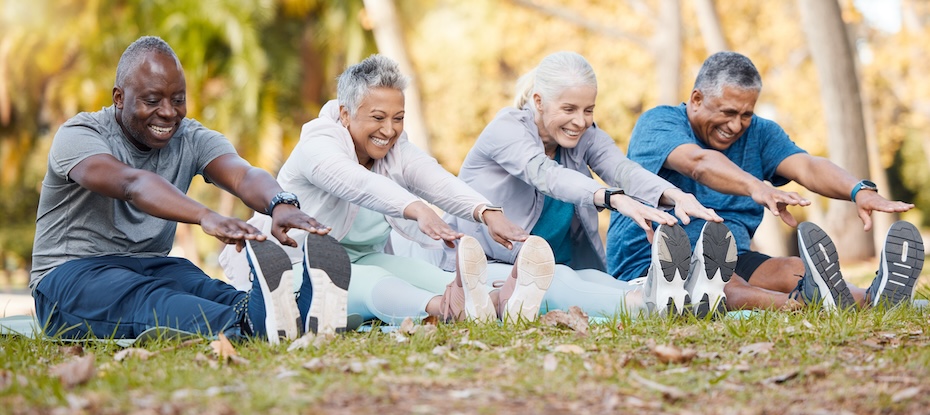
Foot arthritis can impact the quality of life. We rely on our feet to move around, but when some of the 30 joints in the foot and ankle have arthritis, bearing weight and walking can be painful. Fortunately, exercise, walking in particular, can improve the condition.
What is Foot Arthritis?
Foot arthritis is the degeneration of the cartilage in a joint, causing pain, swelling, and stiffness, and inflammation destroys the surface of the bone and the ligaments that support it. People can develop hammer toes, claw toes, stress fractures, and a change of shape of their feet. Foot arthritis can be caused by a trauma such as a fracture, dislocation, or severe sprain from many years ago, an inflammatory disease, or a congenital deformity.
Understanding Different Types of Foot Arthritis
Not everyone experiences foot arthritis the same way. Some forms of foot arthritis are more common in elderly and middle-aged people, while others can impact young people too. There are several kinds of foot arthritis:
Osteoarthritis
Osteoarthritis is the most common form of foot arthritis. Known as ‘wear and tear arthritis’, it is common in middle age as the cartilage in the joint has gradually worn away and become frayed and rough. This causes bone to rub on bone and produce painful bone spurs. The misalignment of feet can cause problems in the hips, glutes, and back. Osteoarthritis usually develops slowly, with the pain and stiffness worsening over time.
Rheumatoid Arthritis
Rheumatoid arthritis is an inflammatory autoimmune form of arthritis. It usually begins in the hands, wrists, and/or feet, but most rheumatoid arthritis patients will experience it in the feet and ankles. Often, people develop claw toes, stress fractures, and changes in the shape of their feet.
Gout
Gout occurs from a natural substance called uric acid. When the body can't renew enough uric acid, it turns into crystals deposited in joints that can cause a sudden attack of intense pain, swelling, and redness in the big toe. Men are impacted by gout more than women, but maintaining a healthy weight and diet, avoiding foods made with corn syrup, and avoiding beer and cool drinks can help.
Lupus
Lupus is an inflammatory autoimmune form of arthritis that can impact the skin and cause joint pain and fatigue. The vast majority of people with lupus are women, and three-quarters of people with lupus experience foot pain. Lupus can cause problems with the muscles, nerves, tendons, and other soft tissue that support bones and joints. Immunosuppressant medication used to treat lupus can increase the risks of foot problems, including ulcers and gangrene.
Psoriatic Arthritis
Psoriatic arthritis is an inflammatory autoimmune arthritis that can affect the skin and joints. Plantar fasciitis and inflammation of the thick band of tissue at the bottom of the foot are common in people with psoriatic arthritis. Nail psoriasis, a thickening and pitting of the toenail that can cause the nail to separate from the nail bed, is also common. People with psoriatic arthritis can also suffer from Achilles tendonitis.
Symptoms of Foot Arthritis
Usually, symptoms gradually develop over time, but some people notice a sudden onset. Symptoms can include:
- Joint swelling
- Warmth and redness
- Pain and swelling in the morning or after sitting
- Difficulty in walking
- Pain after vigorous activity
- Tenderness when applying pressure to a foot joint
- Pain when moving the foot

Foot arthritis can impact a person's mobility and quality of life. When the natural alignment of the feet changes, it can lead to abnormal walking and gait disturbance. An X-ray of the foot can show the narrowing of the joint space between bones and changes in the bones, which may indicate a fracture or bone spurs. A computerised tomography CT scan or magnetic resonance imaging MRI scan may be needed to assess the condition of bones and soft tissues. A blood test can determine the type of arthritis a patient may have.
There are several treatment options for people with foot arthritis. Many patients are advised to make lifestyle modifications to help reduce the pain and slow the progression of the disease. Some may be encouraged to switch from high-impact activities such as jogging to lower-impact activities such as swimming or walking to lessen the stress on the feet. Weight reduction can also reduce stress on joints and pain. People with severe foot arthritis that can't be relieved with non-surgical treatment may find surgery provides some relief.
Benefits of Walking for Foot Arthritis
Many people assume that walking is counterproductive for foot arthritis. They assume that resting and staying off your feet is the best remedy. However, walking is a low-impact exercise that helps keep joints flexible, improves bone health and reduces the risk of osteoporosis.
Low-impact walking increases the blood flow to cartilage, which helps deliver the nutrients needed to cushion and protect the ends of the bones in joints. Blood flow also acts as lubrication of the joints, which decreases pain and stiffness.
Embarking on daily walks can help people obtain and maintain a healthy weight so their foot and ankle joints are under less stress. Walking releases natural pain-killing endorphins in the body. Less pain and spending time outside can improve mood and mental health. One of the main benefits of walking is toning the legs and abdominal muscles, which can increase the range of motion and shift the weight from your joints to the muscles. Stronger muscles can handle more weight and support and protect joints. On another note, sleep problems are common in people with chronic pain, such as arthritis. Brisk walking can help a person fall asleep faster at night and stay asleep.
For the elderly, walking can provide a range of benefits to other parts of their body, including osteoporosis and hip fractures, lowering their risk of heart disease and stroke, and maintaining muscle tone, which can prevent falls.
How to Walk With Foot Arthritis
People with foot arthritis often want to know how far or how long they should walk to gain the benefits. Start slow and gradually increase your walking speed and distance. Doing too much too soon can cause an injury or make your condition more painful. A short, daily walk is ideal, but if not possible, start with every second day for ten minutes. Work your way up to a brisk walk to increase your heart rate for half an hour daily. Not only will walking benefit your foot arthritis, but can have a range of other health benefits, such as improved circulation and reduced risk of heart disease, diabetes, and some cancers. After your walk, stretch the calves, thighs, and hamstrings. And don't skip this step, as it's just as important as the actual walk.
Shoe inserts (orthotics) or custom-made shoes can help minimise the pressure on the foot and decrease pain. Custom-made shoes can enable shock absorption and correct the gait, making walking easier. People with osteoarthritis may benefit from a rocker sole shoe - a high sole and rounded heel. It is best to consult a health professional before buying specialised shoes as some shoe types can worsen balance for some people.
Precautions and Considerations
The precautions a person must take before starting an exercise regime will depend on the severity of their arthritis and general health condition. A person with poor motion and limited mobility is at greater risk of a serious injury, so they may need to modify their walking exercise compared to a person who has mild arthritis and is physically fitter.
People question whether indoor or outdoor walking is best. Outdoor walking engages more muscles and increases blood flow because of the incline and decline of the ground. However, uneven ground and trip hazards can increase the risk of falling for some people. For them, indoor walking at a shopping centre or indoor court would reduce the risk of injury from a fall.
Most people, but not everyone with foot arthritis, can use walking as a beneficial exercise. Seek medical advice before commencing a new exercise regime. You may need an assistive device to improve mobility or minimise the pressure on the foot or its changed shape. The wrong type of exercise may increase pain and progression of the disease.
If you experience sudden intense pain, stop exercising immediately and seek medical advice. Moreover, if you notice more pain or stiffness after walking, try reducing the distance and/or time or take rest periods, but if the sensations persist, seek professional assistance.

Alternative Exercises & Therapies
Walking isn’t the only form of exercise recommended for foot arthritis. People with poor mobility can benefit from exercising on the spot. Using a chair as support, they stand with their weight on the balls of their feet and raise their ankles. Moreover, sitting in a chair, resting the feet on the floor, spreading the toes wide, and holding for five seconds can improve foot strength. Improving the strength and motion of the ankle is important and can be improved by bending the ankle up toward the body and then pointing the toes away while seated.
Swimming, yoga, and pilates are also beneficial forms of low-impact exercise for someone with foot arthritis. A massage can offer the benefits of increased blood flow and circulation to the feet when walking isn’t possible. Hydrotherapy is also ideal when a person is unable to bear weight on their foot. And a physiotherapist can provide treatment to improve the symptoms of foot arthritis and advice on suitable exercises to improve motion and pain.
Complementary Actions
Pairing the chosen exercise and/or therapy with complementary actions can significantly improve one's day-to-day living. A hot or cold compress is an option; if the skin is hot and swollen, use an ice pack, but for stiff or painful joints a heating pad or hot water bottle can do the trick. Use a tea towel to protect the skin from the hot or cold temperatures.
Anti-inflammatory creams can help control pain, some people take fish oil capsules daily for their arthritis, but regardless of what you choose, be proactive, make sure it feels right, and work towards a better lifestyle.
If you’ve been a HIF member with Hospital cover for at least 12 months and fit HIF’s and Kieser’s eligibility requirements - these treatment programs could be a great choice for you. Keiser provides HIF members with tailored physio and supervised exercise programs to support people with chronic conditions, including hip and knee osteoarthritis and spinal issues.